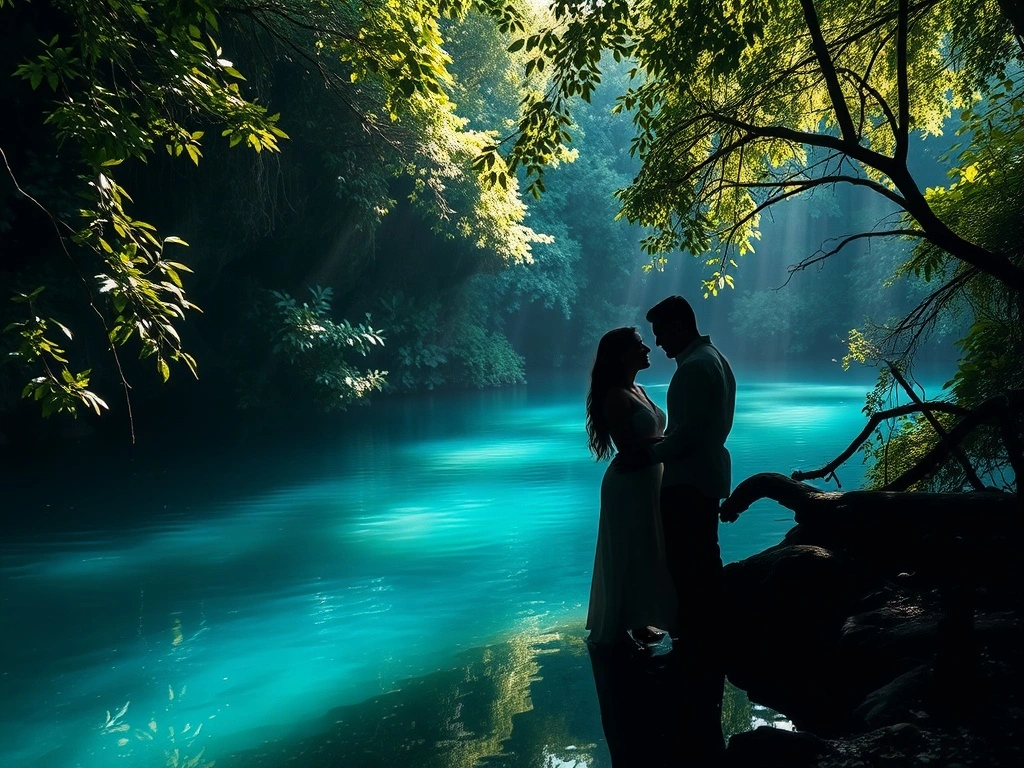Chichén Itzá is one of Mexico’s most iconic archaeological sites—a New Wonder of the World, a symbol of Mayan genius, and a bucket-list stop for many U.S. travelers. But talk to people who’ve been, and the praise often comes mixed with frustration. Before you decide whether the ruins are worth the journey, it's helpful to understand what you *expect* versus what you’ll often *actually experience*. With the right planning (and insider guidance from Ile Tours), you can avoid disappointment and truly appreciate what this storied place has to offer. |
The Myth vs. the Reality: Why Chichén Itzá Divides Travelers
| Expectations vs. Real Experience |
Many U.S. travelers come to Chichén Itzá expecting sweeping solitude, deep cultural immersion, and every structure freely accessible. The reality often includes large crowds, restricted areas, and a whole marketplace of vendors lining the pathways. These differences matter—not to discourage your visit, but to set realistic expectations that lead to a more satisfying experience.
|
| Cultural Heritage vs. Tourist Park |
One of the strongest sources of tension around Chichén Itzá is that it sits on a spectrum between being a sacred site of immense Mayan history and a heavily touristic attraction. Both identities coexist, but they sometimes clash. Knowing where things stand helps you choose how to visit in a way that honors the culture and maximizes your satisfaction.
|
| What U.S. Travelers Say |
Reviewing comments from Americans who’ve made the trip reveals patterns. Understanding them can help you plan something closer to what you *hope* to experience.
|
Timing Is Everything: When to Visit and What to AvoidIf you’ve decided Chichén Itzá is on your must-see list, the when of your visit is just as important as the how. The site draws millions each year, which means your timing can dramatically affect whether your experience feels inspiring or exhausting. For U.S. travelers planning in 2025, here’s what to know about peak vs. low seasons, the best hours to visit, and how the weather and logistics from Cancún or Mérida shape your day. |
High vs. Low Seasons
| Understanding Seasonal Flow of Visitors |
|
Best Times of Day to Visit
| Beat the Crowds, Beat the Heat |
Even within the same day, timing is crucial. Chichén Itzá opens early, and those who arrive first experience the most peaceful atmosphere and the coolest temperatures. Midday hours bring both tour buses and scorching sun, while late afternoons, though quieter, may leave less time to explore thoroughly before closing.
|
Weather and Logistics from Cancún or Mérida
| How Travel Conditions Shape Your Day |
Getting to Chichén Itzá usually means a road trip of 2–3 hours each way. The departure point—Cancún, Playa del Carmen, or Mérida—will shape your experience as much as the season. Pair that with the Yucatán’s tropical climate, and strategic planning becomes key.
|
The 5 Mistakes Americans Make at Chichén ItzáChichén Itzá is a once-in-a-lifetime destination, but many U.S. travelers walk away underwhelmed—not because the site isn’t impressive, but because of common mistakes that can ruin the experience. By knowing what to avoid, you’ll not only enjoy the ruins more but also respect their cultural value. Here are the top five pitfalls Americans face, and how to make sure you don’t repeat them. |
1. Arriving Too Late in the Day
| Why Timing Shapes Your Experience |
One of the biggest mistakes is showing up around midday, when both the sun and the crowds are at their peak. By then, hundreds of tour buses have arrived, the heat is draining, and photography becomes challenging. Early arrival not only means cooler temperatures but also quieter moments to absorb the magic of El Castillo before the masses descend. |
2. Visiting Without a Knowledgeable Guide
| Losing the Cultural Context |
Seeing the ruins without context reduces Chichén Itzá to “just another pyramid.” A professional guide brings Mayan cosmology, astronomy, and ritual life to life—details you’d otherwise miss. Many travelers regret skipping this, admitting they left without really understanding the significance of what they saw. With an expert English-speaking guide, every stone tells a story. |
3. Ignoring Nearby Alternatives
| Missing Out on Hidden Gems |
Many U.S. tourists rush in for a single stop at Chichén Itzá and leave. But the region offers stunning alternatives like Ek Balam, Uxmal, and countless cenotes that enrich the experience. Skipping these nearby treasures makes your day feel one-dimensional, when it could have been a cultural circuit combining ruins, colonial towns, and natural wonders. |
4. Treating It as Just a Tourist Attraction
| Overlooking Its Cultural and Spiritual Value |
Chichén Itzá is more than photo ops and souvenirs—it’s a UNESCO World Heritage Site and a sacred landmark for the Maya. Reducing it to a “checklist stop” robs you of the chance to engage with its deeper meaning. Approaching it as a cultural and spiritual experience makes the visit richer, more respectful, and far more memorable. |
5. Underestimating Logistics and Comfort
| Poor Planning Can Spoil the Day |
From long drives out of Cancún or Mérida to intense midday heat, many travelers underestimate the physical effort required. Lack of water, shade, or proper footwear leads to frustration and exhaustion. Partnering with an experienced operator like Ile Tours ensures air-conditioned transfers, flexible timing, and personalized pacing that keep the day enjoyable from start to finish. |
Alternatives Worth Considering: Uxmal, Ek Balam and BeyondWhile Chichén Itzá is world-famous, many U.S. travelers find equal or greater satisfaction in visiting lesser-known Mayan sites. Places like Uxmal and Ek Balam offer extraordinary architecture, fewer crowds, and a more intimate connection with history. If you want to avoid tourist saturation, these alternatives provide authentic cultural immersion and can easily be woven into a Yucatán itinerary. |
Uxmal: The Jewel of the Puuc Route
| Architecture, Mystery, and Tranquility |
Located near Mérida, Uxmal is celebrated for its intricate facades and the towering Pyramid of the Magician. Unlike Chichén Itzá, climbing some structures is still possible, making the visit more interactive. The site is part of the Puuc Route, a chain of archaeological sites where travelers experience ancient architecture without the overwhelming crowds. It’s a must for those who value quiet reflection and striking artistry. |
Ek Balam: A Hidden Gem North of Valladolid
| Climb, Discover, and Explore Without Pressure |
Ek Balam remains relatively unknown compared to its famous neighbor. Its main pyramid, the Acropolis, is still climbable and rewards visitors with panoramic jungle views. Intricate stucco carvings showcase Mayan artistry rarely preserved elsewhere. With fewer tourists, you can enjoy a more personal experience, take time for photography, and even pair the visit with a refreshing swim in nearby cenotes. |
Other Worthy Stops: Beyond the Icons
| Less Crowded, More Authentic |
Beyond Uxmal and Ek Balam, sites like Kabah, Sayil, and Labná on the Puuc Route, or Coba with its jungle-shrouded pyramids, present deeper cultural encounters. These ruins provide insight into different Mayan architectural styles and regional identities. They’re ideal for travelers looking to explore beyond the “big names” while supporting sustainable tourism in smaller communities. |
How to Combine Them in a Yucatán Itinerary
| Smart Planning for U.S. Travelers |
A well-structured itinerary could include Chichén Itzá for its global prestige, Uxmal for architectural grandeur, and Ek Balam for adventure and serenity. Adding cenote swims, colonial towns like Valladolid or Mérida, and cultural stops such as local markets creates a balanced trip. With Ile Tours, these combinations are customized to match your pace, ensuring you see the highlights while avoiding tourist fatigue. |
How Ile Tours Elevates Your Yucatán Journey
| Travel Beyond the Ordinary |
Planning a visit to Chichén Itzá—or its equally fascinating alternatives—can be overwhelming when you factor in timing, transportation, and hidden gems scattered across the Yucatán. That’s where Ile Tours makes all the difference. As a boutique travel operator specializing in luxury, tailor-made itineraries, we ensure you experience these legendary sites with ease, comfort, and exclusivity.
Instead of rushing through the Yucatán like most travelers, let Ile Tours guide you to savor it at your own pace. With us, your trip becomes more than sightseeing—it becomes a once-in-a-lifetime cultural journey. |
Plan Your Yucatán Adventure Today
Don’t just visit Chichén Itzá—experience it fully along with the wonders of Uxmal, Ek Balam, and beyond. With Ile Tours, you’ll enjoy curated travel that blends culture, comfort, and exclusivity for discerning U.S. travelers in 2025. |




